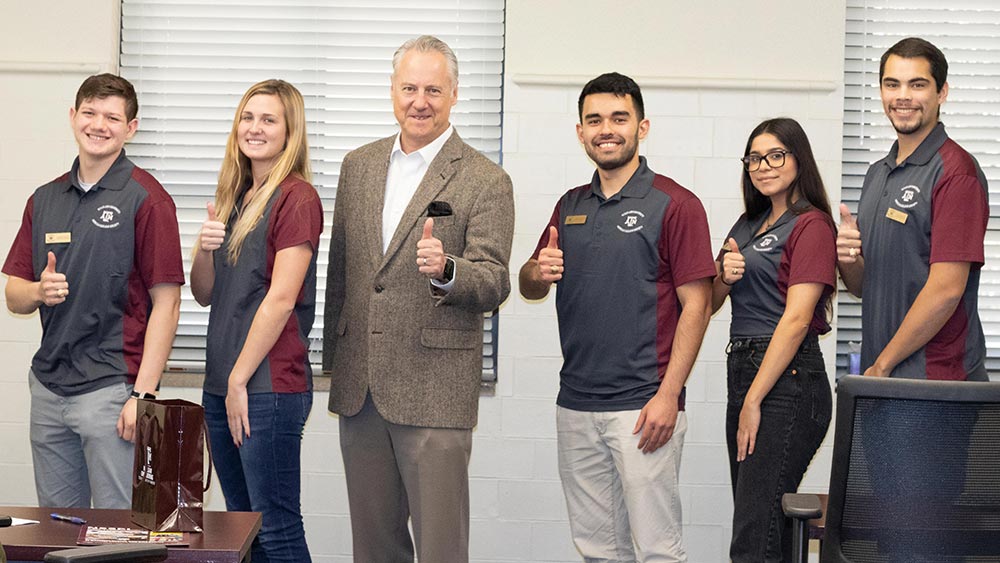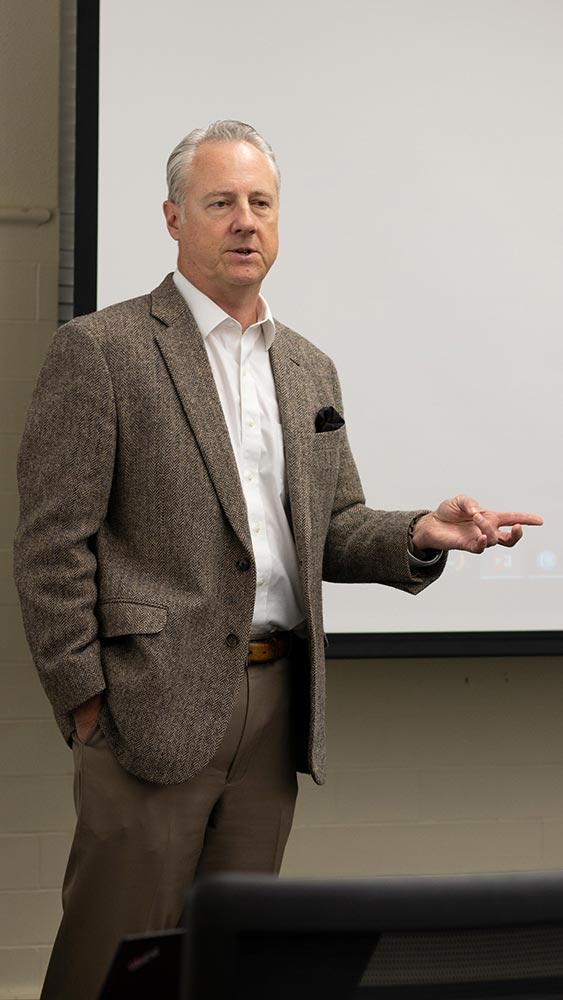
American Nuclear Society (ANS) executive director and CEO Craig Piercy visited Texas A&M University recently to hear from Texas A&M ANS chapter students in the Department of Nuclear Engineering. New to his position as CEO, Piercy wanted to hear from students about how the organization could improve and better support the individual chapters. He sat down with ANS student president Ihsan Yuksel to discuss how work done at the corporate level affects constituents.
Yuksel: Thank you for coming here to meet with us. It’s a pleasure to have you here. I know that you’re visiting many ANS chapters at universities across the United States. Why did you choose Texas A&M as your first stop?
Piercy: Texas A&M nuclear engineering is the largest nuclear engineering department in the nation. I have a fascination with the state of Texas because there’s a certain economic and demographic vibrancy that you don’t find many other places in the country. Texas A&M students in particular have a level of excitement and enthusiasm that you don’t find elsewhere.
Since I became CEO, ANS has been reorganizing how we do things. Our goal is to create an organization that is more supportive of the next generation of scientists, and I think that begins with Texas A&M.
Texas A&M students in particular have a level of excitement and enthusiasm that you don’t find elsewhere.
Yuksel: What are some of your other goals for ANS? What do you hope to change?
Piercy: One of our priorities is to focus on improving external communication surrounding nuclear exposure, specifically low-dose radiation and its impacts. At their core, many nuclear issues are driven by a fear of radiation. We want to provide factual information to the public to increase the literacy on nuclear energy.
When we see stories in the media that are factually incorrect, we want to do a better job of confronting those stories and changing that narrative to inform the public about the benefits of nuclear energy. But that’s not an easy task to undertake.
Yuksel: Right, it’s quite challenging. How do you suggest we do that? Where do we even begin?
Piercy: It really begins with the individual members of the society. As some point in our lives, each of us will be called on as experts to share our knowledge about nuclear science. Everyone should be prepared to openly discuss with their community about low-dose radiation and why people shouldn’t worry as much as they do.

I also think it begins in the classroom. I don’t feel that ANS has a proper set of visuals, be it a PowerPoint or an infographic, that explains the different doses of radiation. Teachers lack suitable classroom materials to discuss things like radiation exposure. That’s something I’m hoping to change.
Yuksel: It’s also a conversation that should be had with the media on a national level. There was a widespread sense of fear after Fukushima that some would say was linked to ineffective reporting. Do you ever see us getting to the point where nuclear scientists are on national news explaining what’s actually happening after a disaster or crisis?
Piercy: That’s where I want us to be. I’d like us to have a group of people with varied experience in different nuclear fields to face the public in the wake of a nuclear event. And you know, they can’t all look like me. The younger generation of scientists – they are scientists of all ethnicities, all beliefs. It’s people with tattoos and people who identify as LGBTQ. That’s the future. That’s who we want to resonate with. It’s been an historical challenge within the nuclear industry to represent what America looks like, and it’s one that I’m hoping to overcome.
Yuksel: How can we as Texas A&M students in the nuclear engineering department leverage our resources to support the ANS objective?
Piercy: You guys are already doing a lot. You have a very motivated student body and everyone is extremely active in supporting the university, the program and the surrounding community. In the short-term, I would benefit from your feedback. What are we doing right or wrong? How can we improve and provide you with better materials and support for community outreach? Things like that. But really, keep doing what you’re doing.
Yuksel: Absolutely, that’s great to hear. Thank you again for meeting with us today. We hope you’ve enjoyed seeing Texas A&M.
Piercy: Yes, it’s been a pleasure.